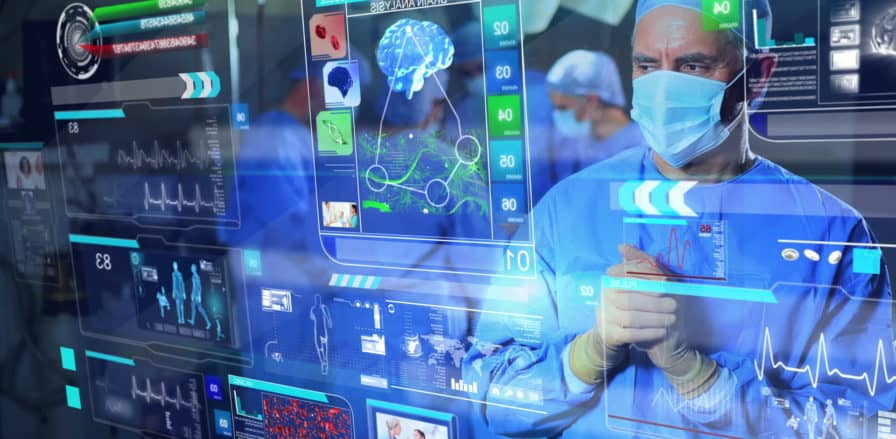By: Rachel Sokol, Head of Healthcare Research, Olive
The past year has called attention to massive inefficiencies in our healthcare system which, coupled with the incredible weight of the pandemic, is leading to widespread worker burnout. In order for our healthcare system and its humans to weather our continued storm, we must alleviate the burdensome administrative workflows, tedious manual data entry, and archaic physical paperwork processes that are bogging healthcare workers down.
Since the digitization of medical records, provider and payer organizations have sought to document anything they believed could support better patient outcomes. As a result, the amount of healthcare data for staff to manage is projected to grow 581% over the next five years.
Without Technology, The Great Resignation Will Only Get Greater
Simply put — there aren’t enough people to process that data. Healthcare hiring is only predicted to grow 15% by 2029. Right now, many fields are experiencing a worker shortage and burnout (“the great resignation,” as some call it) but the implications of that shortage in healthcare are truly life or death.
As a researcher, my first step is always to listen to what the data is telling us — and in the Internet of Healthcare Report, 64% of healthcare executives said there will never be enough staff to handle the data at their organizations. It’s not humanly possible to keep up with the demands placed on humans. And it’s not fair to ask them to keep pace.
We’re stuck in an endless cycle of patients entering the same information over and over again, followed by healthcare teams completing the same administrative tasks over and over again.
A whopping 91% of healthcare professionals agree that automation technology is the most important investment they can make to improve care quality, and 93% believe applying automation to remedy these administrative processes will be good for their careers. Nearly half (49%) of C-level healthcare executives fear that employee turnover will be the likeliest consequence of their organization not automating.
Why aren’t the workers who need help most experiencing the benefits of technology?
Now is the time to give the healthcare community a much-deserved break.
We Must Support — Not Strain — Our Healthcare Workers
COVID placed an unprecedented strain on an already burdened system. To help hospitals focus on the clinical emergency, the healthcare community alleviated administrative requirements on providers where they could. Payers and regulators altered rules around documentation and telemedicine seemingly in real-time. It felt like the least they could do — to not make it harder to act quickly and safely in a stressful time.
Case counts are still increasing in many places and the healthcare industry has already reverted to its previous patterns. Prior authorizations are again in effect. Allowances previously made for telehealth are going back to their pre-pandemic baseline. CMS is maintaining (though delaying) $2 million penalties for non-compliance with price transparency rules, to be implemented within the next year.
And these may ultimately be the right decisions. They were implemented to save costs, but the reversion feels premature, to say the least. Payers and regulators are reinstating these rules at a time when clinical and administrative workers are burnt out, stressed, and in need of support.
Given all this community has gone through, is this how we should show our support? By going back to business as usual? By ignoring the demands to lighten the reporting requests that they’ve made for years?
We have spent the last year and a half referring to healthcare workers as heroes. Now, instead of greeting workers as such and providing them the respite they need, it’s back to the same over-administratively burdened environment.
A new era in technology innovation is dawning, and with it, a mindset shift. Collectively as an industry, we must think of automation technologies as an extension of hospital teams — an AI workforce.
The healthcare industry can shift from a focus solely on practicing at top of license to practicing at the “top of engagement.” Automating mundane tasks leads to a motivated workforce with more time to spend on patient care. It’s how we should show gratitude to our healthcare heroes.
Healthcare executives estimate that their staff could get over 90 minutes back a day to spend more productively — with patients — if burdensome processes were automated.
It’s not a question of if executives can afford to automate where they can, but rather how they can afford not to.
The Editorial Team at Healthcare Business Today is made up of skilled healthcare writers and experts, led by our managing editor, Daniel Casciato, who has over 25 years of experience in healthcare writing. Since 1998, we have produced compelling and informative content for numerous publications, establishing ourselves as a trusted resource for health and wellness information. We offer readers access to fresh health, medicine, science, and technology developments and the latest in patient news, emphasizing how these developments affect our lives.








